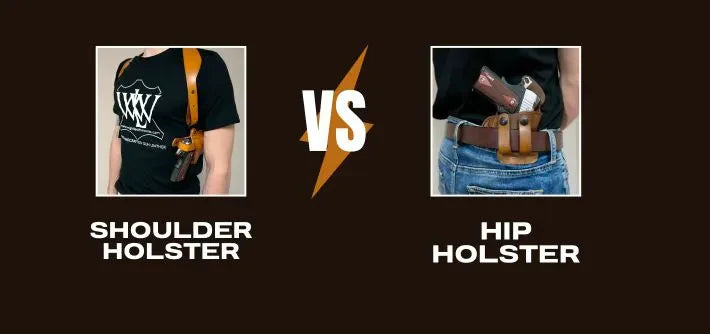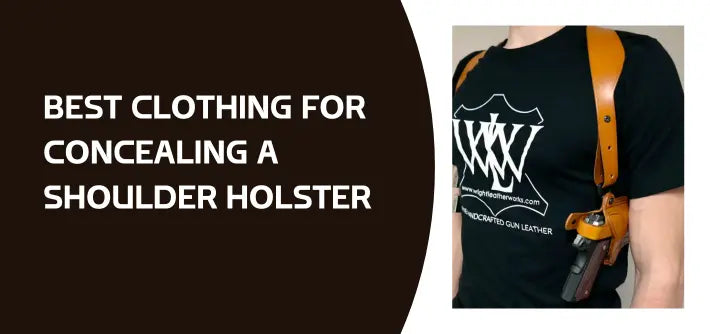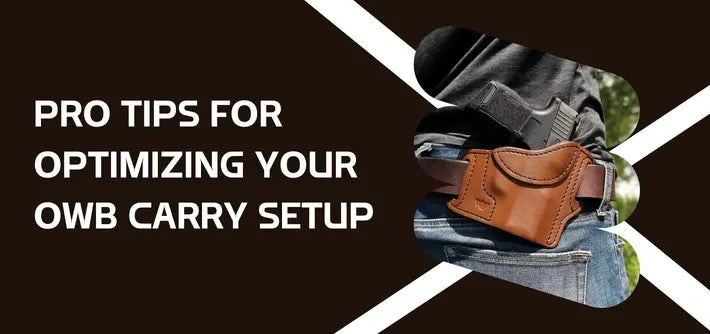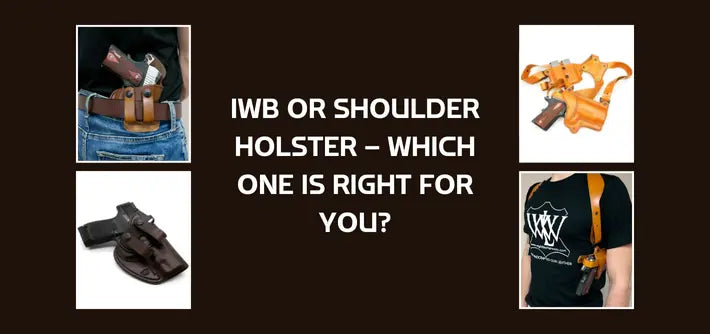Your gun is as safe as the holster you carry it in. Without keeping it enclosed in a secure and high-quality concealed carry, there is always a fear of slips and accidental fires. However, choosing the right holster is not as simple as one might think it to be. Every gun cover has distinct features, benefits, and limitations. Therefore, deciding between a shoulder holster and a hip holster can be tricky. So, how do you select one? Which holster serves your purpose and requirements?
This blog is a guide to help you decide whether a shoulder holster is better than a hip holster for you. It outlines the features, pros, and cons to help you make a choice.
Shoulder Holster Vs Hip Holster: A Quick Comparison
| Features | Shoulder Holster | Hip Holster |
|---|---|---|
| Gun Options | Mid to full-sized handguns | Compact and subcompact firearms |
| Concealment | Suitable for open carry | Hides a gun under oversized clothing |
| Accessibility | Easy to access at all times | Requires cross-draw |
| Comfort | More comfortable when driving or sitting | More comfortable when standing |
| Placement | Worn across the chest, underneath the arms | Worn on the waistbelt |
Shoulder Holster: An Overview
A shoulder holster is the ideal choice for those who have to sit or drive for longer hours. It feels more comfortable and enables easy drawing in different situations. When you carry a shoulder gun cover, you keep the load off your waist belt and equally distribute it on your shoulders. It keeps your gun secure underneath the armpit, either in a horizontal or a vertical position.
Advantages of a Shoulder Holster
- Ensures Prolonged Comfort: Since the entire weight of the gun is levied on your shoulders, you don’t feel uneasy when sitting or driving for long hours. This concealed carry is suitable for those who find IWB and OWB holsters uncomfortable.
- Allows Easy Access: The gun carry is ideal for those who sit for long hours and might need to draw out their weapons in emergencies. Therefore, many of the detectives and parole officers use the shoulder holster in their daily lives.
- Suits Open Carry: Since the holster rests your gun underneath your armpit, it doesn’t hide very well. So, the officers who have no trouble keeping their gun out in the open (rather prefer it) find a shoulder holster to be the ideal fit.
- Preferred for Full-Length Handguns: A shoulder holster is larger compared to a hip holster, making it suitable for mid- and full-length weapons. Such a gun cover also makes it easy for you to carry add-on items like extra magazines and reflex optics.
- Distributes Equal Weight: The holster works like a backpack, distributing the load on both your shoulders. Also, it comes with magazine pouches or overweight on the opposite side, improving your balance and comfort.
Disadvantages of a Shoulder Holster
- Slow Draw in Standing Position: In case you are standing or running, drawing becomes slightly difficult as it requires a cross-draw position. It is awkward and less intuitive in stressful situations.
- Cannot Conceal Your Gun: Although professionals who prefer open carry use a shoulder holster, it becomes difficult if you want to conceal it in certain situations. You need to wear clothes that can properly hide the holster, which is difficult in summer.
- Safety Concerns: When the shoulder holster is positioned a horizontal position, there is always a risk of accidental fire. Even during the draw, the muzzle may sweep across the body before pointing forward, increasing the safety concern.
Hip Holster: An Overview
Hip holsters (commonly known as IWB and OWB holsters) are the most basic choice for any gun owner. Fixated around the waistbelt, this gun carry rests neatly underneath your clothing and assures concealment. Generally, these covers come with options like belt clips or hooks for secure attachment and removal.
Advantages of a Hip Holster
- Quick Draw: Since the gun is located close to your dominant hand, you can quickly draw it in any situation. This placement and convenience make the holster suitable for emergency face-offs.
- Maximum Safety: The holster is close to your body, preventing unauthorised access and accidental loading. Most concealed carry comes with locking mechanisms to prevent discharge.
- All-Day Comfort: If your hip holster is fitted properly on the waistbelt, you can stand, walk, or chase a culprit without feeling uneasy. The gun’s weight will be equally distributed on your waist, making it a comfortable choice for everyday use.
- Suitable for All Firearms: Hip holsters are designed with customised requirements to suit everyone’s needs. This specificity makes it an appropriate choice for guns of all sizes.
- Provides Stability: Once the hip holster is attached to the waistbelt through clips or hooks, you can be assured that it will not move. So, whether you walk or run, there’s always stability. Such a holster is most suited for those who are constantly active.
Disadvantages of a Hip Holster
- Risk of Printing: In case you own a large gun and wear tight-fitted clothing, there is an increased chance of printing. Such a problem commonly arises with an OWB since it rests outside the pants.
- Uncomfortable in Certain Situations: The holster can dig or press against your body, making it an uncomfortable choice for the drivers. This problem especially occurs if you have large firearms that take up more space on your waistbelt.
- Restricted Mobility: A hip holster doesn’t let you move freely and is a less practical choice, especially if you twist, bend, or sit constantly. Such a gun cover is only suitable for law enforcement officers who are regularly on the move.
- Feels Heavy: Since law enforcement officers prefer concealed carry for large guns, it is not a very comfortable choice for them. You require a robust, purpose-built belt for balance.
Shoulder Holster vs Hip Holster: The Right Choice for You
For a law enforcement officer or detective, the right solution is to leverage both shoulder and hip holsters. You can have more than one holster to suit your varying requirements. However, if that doesn’t sound like you, the right choice will depend on your specific purpose. Weigh in the aspects, pros, and cons of both the holsters to help you decide.
FAQs
-
Is a shoulder holster a common choice nowadays?
Yes, several gun enthusiasts prefer a shoulder holster over other types as it is comfortable to wear and is ideal for carrying over long hours. -
What are the advantages of a hip holster?
A hip holster is compact and conceals your gun more efficiently than other holsters. It attaches to your waistbelt accurately and ensures maximum comfort while moving or running. -
Are IWB and OWB types of hip holsters?
Yes, IWB and OWB are two types of hip holsters, both attached to the waistbelt. An IWB is positioned inside your pants while an OWB holster is outside them. -
Should a shoulder holster be on the left or right side of your arms?
The position of a shoulder holster depends on your dominant hand. It should be on the opposite side of it for easy cross-draw. -
Who uses a shoulder holster?
Shoulder holsters are mostly used by undercover officers, bodyguards, and detectives.






Leave a comment (all fields required)